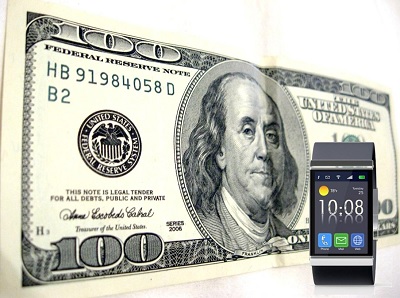A new report has shown that 70 percent of wearables can be purchased for under that amount.
According to recent news, wearable technology devices can be purchased for under $300 in the majority of cases, depending on what it is, the brand, its capabilities, and so on.
The research was published in the Q1 2014 Wearable Market Insights Report by Vandrico.
Vandrico is a company based in Vancouver, Canada, which is rapidly joining the top resources within the wearable technology space. This firm launched a massive research effort in February, which resulted in the most comprehensive wearables database that is currently available online. Using the data from that source, it was able to provide forecasts and insights in this new sector of the mobile tech industry.
It showed that there has been a growth of wearable technology search queries of 588 percent in one year.
This was the case on Google, alone. The database at Vandrico currently includes 193 different wearables. This is an increase from having had a total of 115 only three months ago. Clearly the shelves are filling quickly in this sector.
Among the points that Vandrico found to be quite notable was that in 70 percent of the devices, the price tag is less than $300. The most common price range was somewhere between $100 and $250. This makes many of the devices quite affordable for the majority of consumers.
Among the notable success stories that were identified are the Fitbit Flex, which currently retails for $99.99, as well as a growing number of smartwatches, primarily the Pebble, which retails for $149.99 at the moment.
Interestingly there is a noticeable gap between the lower price range wearables (under $300) and those that are in higher price ranges. The next price range ends at about $550, but then there isn’t much until the $1,000 mark has been passed. It is in that bracket that the Meta, Vuzix, and the Google Glass are categorized.
As is the case among other product categories, Vandrico underscored the point that wearable technology product complexity, quality, and pricing all play a notable role in the decisions that consumers make in terms of making a purchase.

 Google Glass has been the subject of legal debates throughout the world, but these debates are not always focused on the possibility of invasion of privacy. In some states in the U.S., the use of Glass has already been prohibited amongst drivers. The reasoning behind this ban has to do primarily with the possibility of the device distracting drivers in the same way that other mobile devices do. Glass is not the only wearable device that has come under fire, of course, but it has become the most popular device to receive legal attention.
Google Glass has been the subject of legal debates throughout the world, but these debates are not always focused on the possibility of invasion of privacy. In some states in the U.S., the use of Glass has already been prohibited amongst drivers. The reasoning behind this ban has to do primarily with the possibility of the device distracting drivers in the same way that other mobile devices do. Glass is not the only wearable device that has come under fire, of course, but it has become the most popular device to receive legal attention.